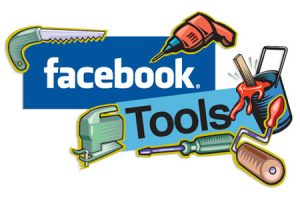In the 21st century, your company’s success relies heavily on the way you market yourself online. Cultivating a strong digital brand and positioning yourself as a thought leader can make you stand apart from the competition when it comes to scoring new customers and it will help you stay one step ahead when it comes to recruiting new talent.
With social media, there is now more opportunity than ever to reach your target audience and build your brand. The wide selection of platforms available, however, can make it difficult to figure out your own niche and how to own it. LinkedIn, Facebook, Google+, Twitter, Instagram, Tumblr, Pinterest, YouTube, Snapchat, Periscope – which one will help you reach your audience and carve out your space in the digital world most efficiently?
What is social media branding?
Ideally, social media branding is an integral part of your social media marketing plan which is the summary of everything you want to achieve for your business using social networks – including how you plan to achieve it. To set yourself up for success rather than a shot in the dark, this plan should comprise an analysis of where exactly your accounts are at today, where you want them to be in the future, the tools you’re intending to use to get there and, most importantly, how all of this ties in with your overall company objectives. Your business goals create the basis of all marketing efforts. Therefore, they will have a large impact on your messaging, which platforms you choose to target, what kind of content you will share with your audience and so forth. Ask yourself: Is your main goal brand awareness? Are you looking to increase your social following? Do you want to increase your page conversions? Schedule a certain number of product demos a month? The answer to these questions will determine your actions but also serve as a measure by which you conclude whether you’re succeeding or failing. Once you have established a strong sense of where you want to be going you can take a look at your options of how to get there.
Posts on LinkedIn that speak to a wide business savvy audience can go viral, and engaging with companies and influencers on Twitter and Instagram can help strengthen your brand’s online authority and credibility – just to give a few examples. To put your efforts into the right digital place it makes the most sense to analyze your target audience first and then compare your results to social media demographics. For instance, if your business is in wealth management, then Snapchat might not be the best option for you. Snapchat’s main demographic is people in their early twenties. A more fitting option would be LinkedIn since it’s a B2B network that attracts business owners.
What are the keys to successful social media branding?
In order to build a strong brand authority online, be aware that everything you post in a public space makes up your brand. Define your brand voice first and make sure you stay consistent across all platforms and content. Put effort into creating unique and interesting content that will speak to the problems, questions, and interests your audience might have in relation to your product or service. This can be as simple as sharing interesting articles from niche and trade media, or more labour intensive, original, and educational blog posts, infographics, and slideshows sharing your thoughts and experiences with your networks. A great place to do some research on relevant keywords and trending topics is Buzzsumo. It will give you a good idea of which topic are relevant to your audience, what has been talked about too often already and which influencers you need to watch.
While you’re busy working on what your brand sounds like online, don’t forget to pay attention to your brand’s visuals. They’re equally important to achieve high brand recognition and therefore need to be just as consistent as your content. One company that does a really great job at that is Oreo. If you compare the company’s social media profiles you’ll immediately notice the resemblance in style:

Oreo uses its popular blue, black, and white colour scheme across all social media channels. Another thing you’ll notice is that their branding doesn’t end with the logo. When you compare the posts the company shares, you’ll rarely find visuals that don’t include the color blue, plus there’s one consistent style for graphic designs and fonts. It’s like they’re all made by one designer.
How can you create your own social media brand?
Start by picking a colour palette to define your brand. The best way to go about this is to base that colour palette on your logo. My recommendation would be to go with the dominant colour of your logo – in Oreo’s case that’s blue – and from there find complementary colours that’ll become part of your brand tool box. Oreo went with black and white which is very wisely chosen and additionally increases the brand’s recognition factor because those are exactly the colours of their product. Those colours should then carry through anything you do online. Any social avatars, background themes, graphics, and so on. The idea is to get to a point where people automatically associate those colours with your brand.
Another big deal on social media that easily gets forgotten are filters. Use filters carefully or else your profiles can look very messy. Whenever you’re sharing images on Facebook, Instagram or other channels, you need to keep your filters consistent. With all these convenient picture editing apps we have on our phones nowadays, it seems tempting to use a different overlay whenever you feel like it. However, for the sake of consistency, you should pick one or two filter settings and stick to those to avoid looking unorganized and unprofessional.
If you share your social media management with other members of your team, it can be hugely helpful to create branding guidelines (that include: brand voice, colours, fonts, filters, topics, etc) and templates for any visuals your company shares on social. That’ll add another layer of consistency and avoid misunderstandings among your team. An easy tool to use for that is Canva or, of course, you can use Photoshop.
Once you’ve done all the groundwork and are ready to jump start your social media branding, there are just a few more things to keep in mind:
- Promote your profiles through any other marketing you’re doing and link them to each other every chance you get.
- Stay on top of conversations on your social channels – engage, engage, engage.
- Post regularly: setting up a social media calendar is a great idea to never lose track of your social media efforts.
- Connect with Influencers to expand the credibility of your brand.
- Stay honest, authentic and true to your brand voice and values.
When marketing your brand online, it all starts with creating your brand voice and a corresponding brand image. Identify your big picture marketing goals and figure out how social media can help bring them to pass. Adjust your messaging and imagery to best suit the tone and audience of a given social media platform. Once you’ve finalized a vision, create branding guidelines to ensure the voice stays consistent. With a fully defined and actualized brand voice and social media strategy, you hold the key to unlocking social media branding.
Digital & Social Articles on Business 2 Community(97)






